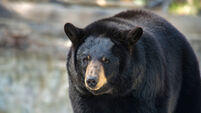It's a genetic adaptation that allows Tibetans to live in such high altitudes
Now research from the University of Utah has shown a genetic mutation, or adaptation, which helps Tibetans thrive in conditions many of us couldn’t cope with.
Senior author and University of Utah professor of internal medicine, Josef Prchal, MD, needed donations of blood from Tibetans from which he could extract their DNA – but he quickly learned it would be a tough task. It took a letter from the Dalai Lama, the Tibetan spiritual leader, for him to gain their trust.














